Abstract
1. The reflex effects on the pattern of breathing and total lung resistance of introducing 30, 10 and 5% CO2 in air into the larynx have been studied in anaesthetized and decerebrate cats breathing through a tracheostomy tube.
2. Flowing 30% CO2 into the larynx caused a two-phased response. First, respiratory frequency and tidal volume decreased, with a consequent fall in minute ventilation. After two to ten breaths, frequency remained slow, but tidal volume increased beyond the control level, so that minute ventilation was restored to control levels.
3. Flowing 5 or 10% CO2 into the larynx caused slowing of breathing with small and inconsistent changes in tidal volume. Minute ventilation was significantly diminished.
4. Off effects, on re-introducing air into the larynx, after 2 and 10 min of CO2 exposure, suggested that the reflex response diminishes with increased duration of exposure to CO2.
5. None of the concentrations of intralaryngeal CO2 changed total lung resistance or compliance.
6. CO2 mixtures in the larynx generally caused no change in blood pressure or pulse rate of the cats.
7. The reflex effects of intralaryngeal CO2 were abolished by denervating the larynx.
8. Hypoxic mixtures introduced into the larynx did not change breathing.
Full text
PDF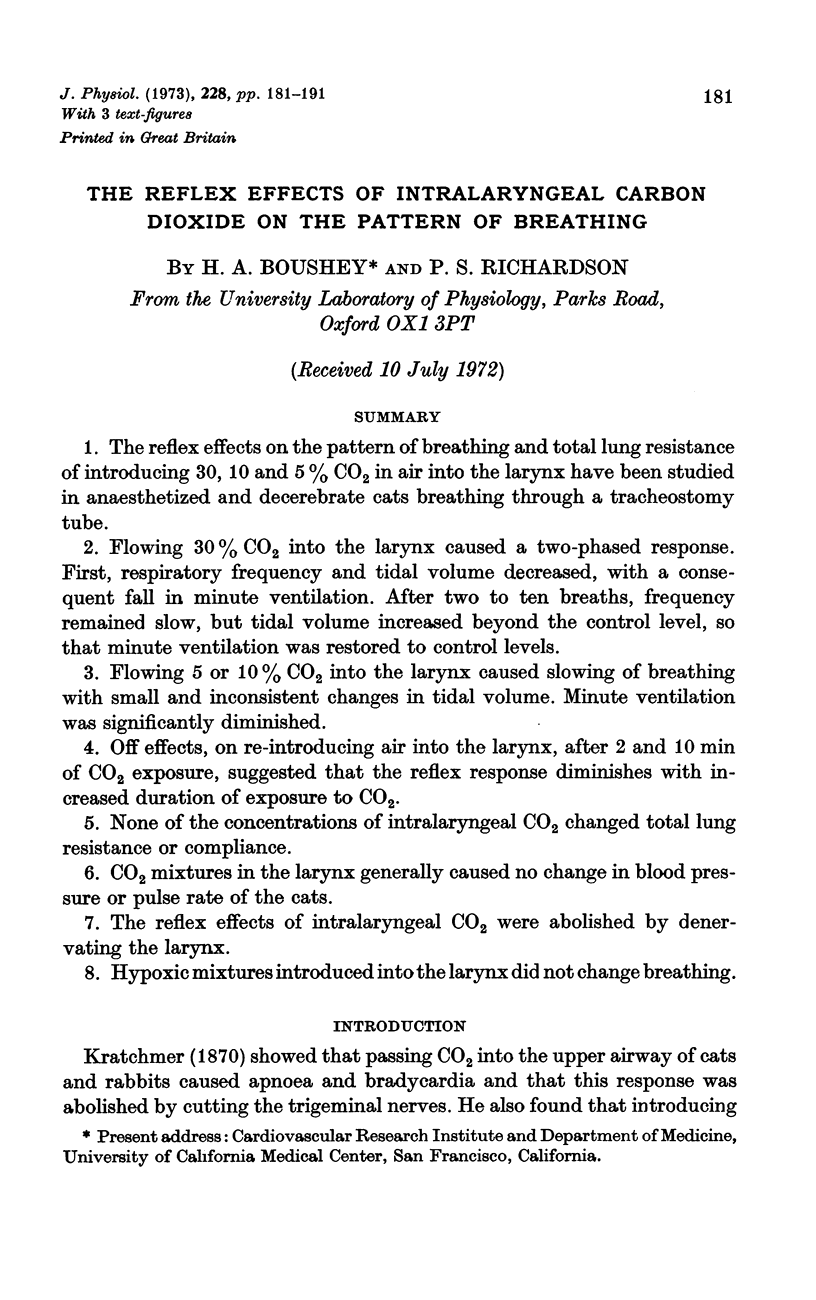
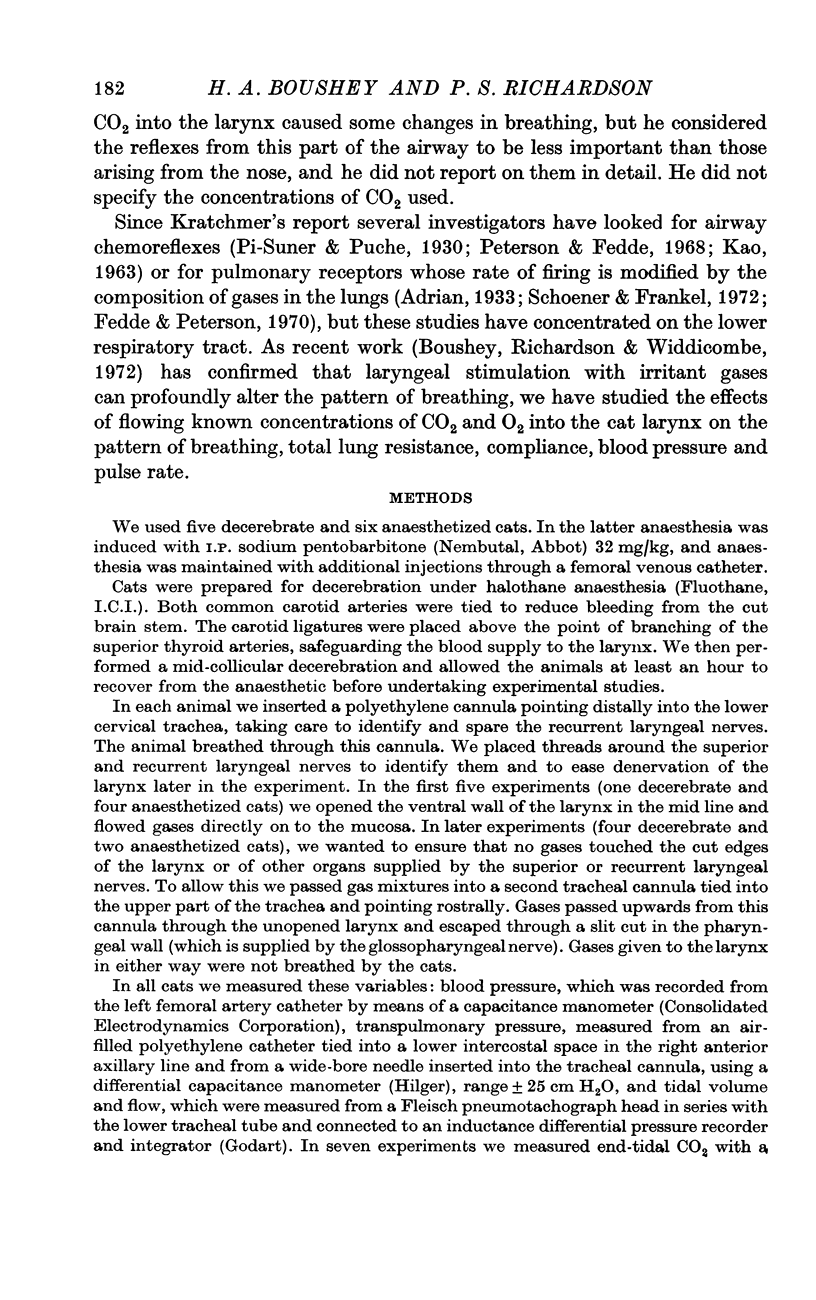
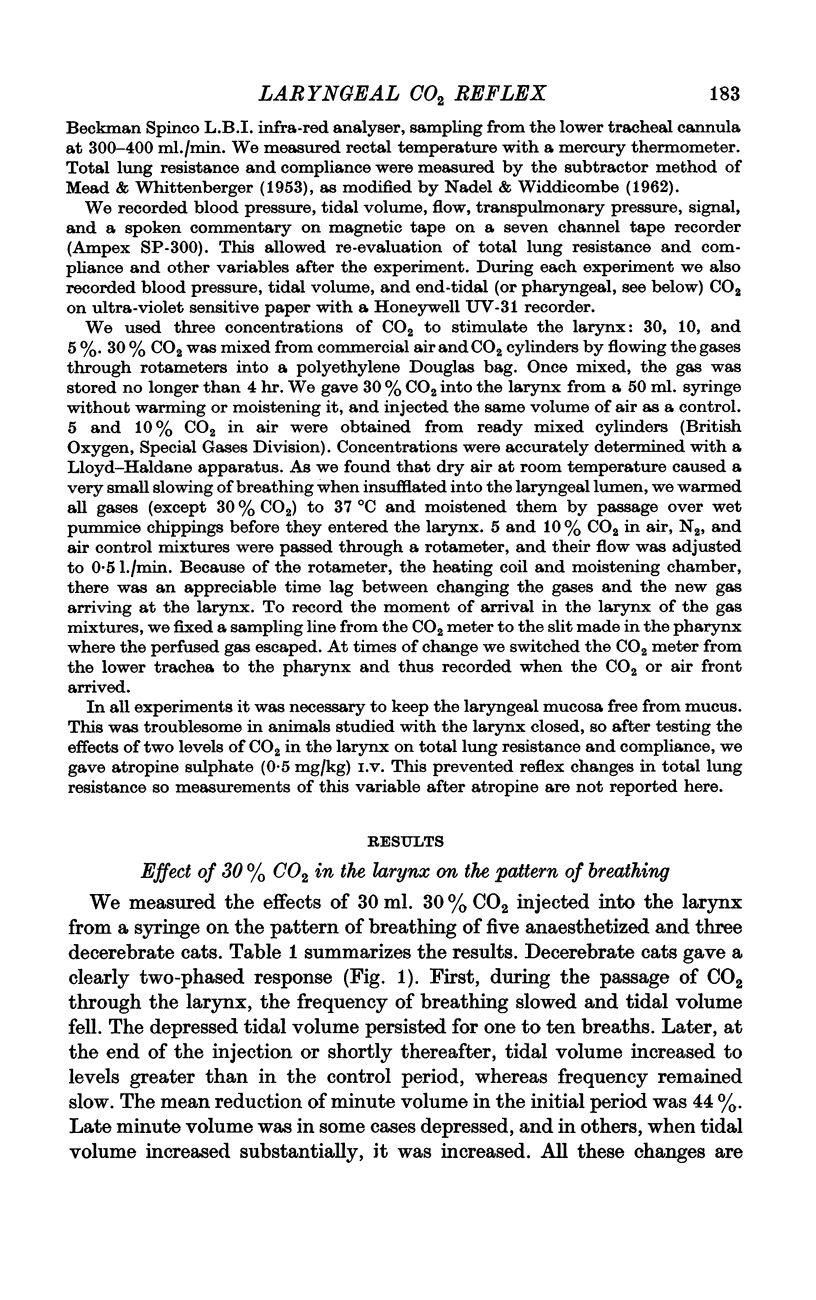
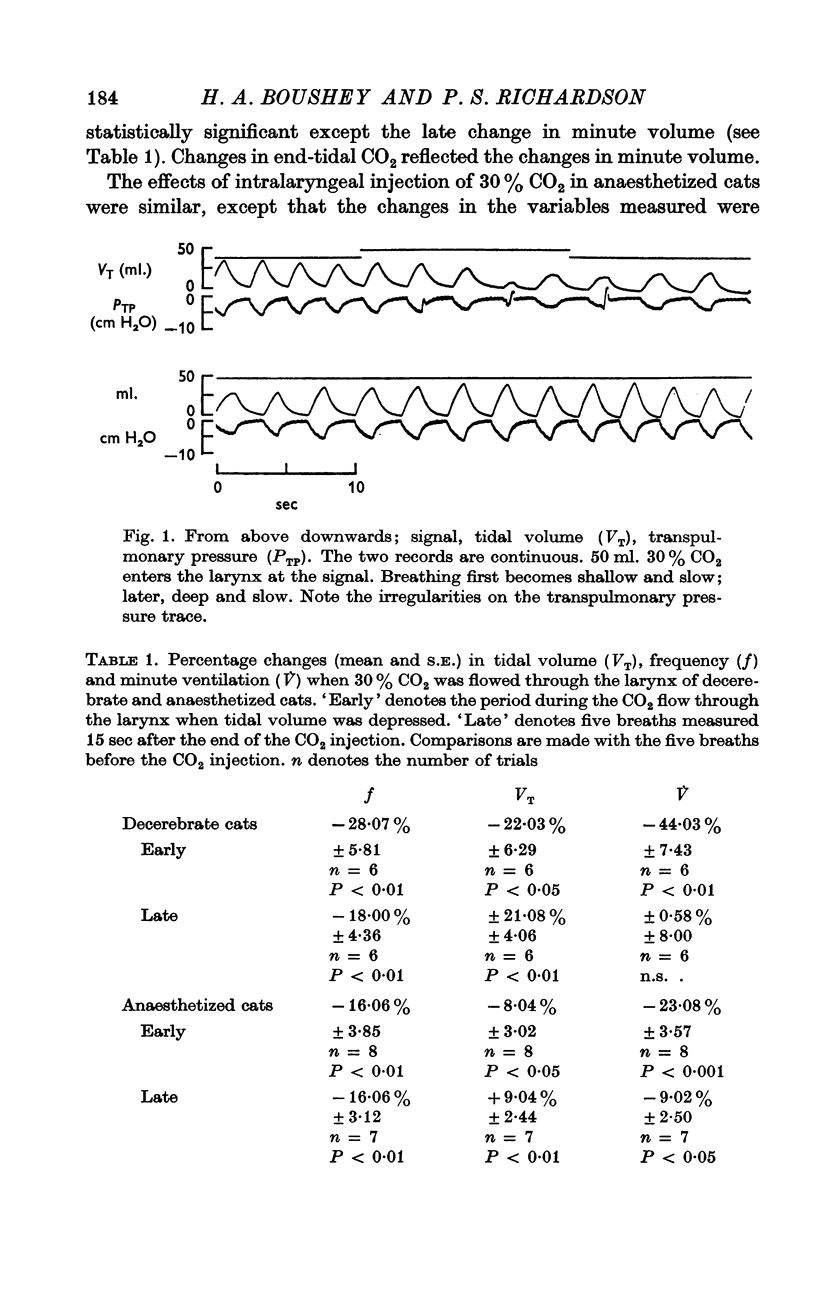
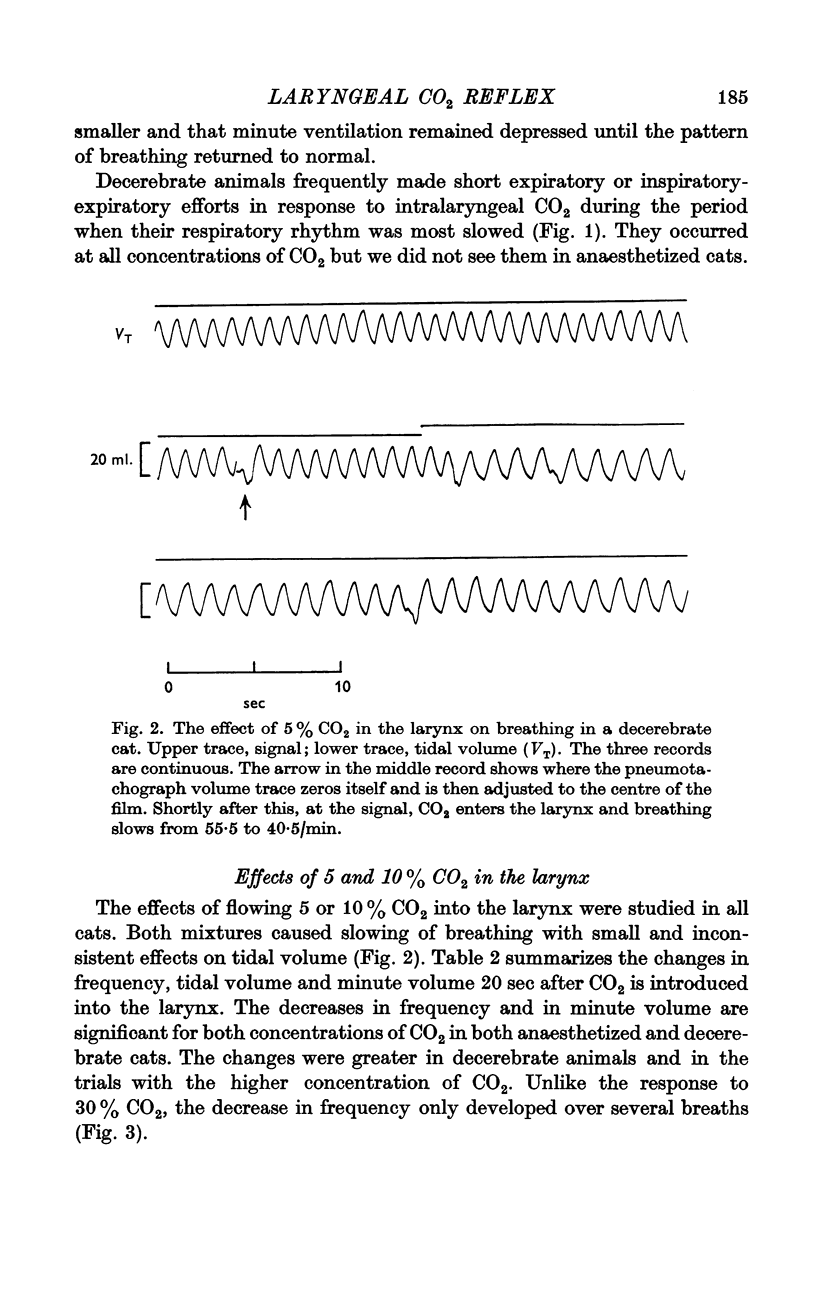
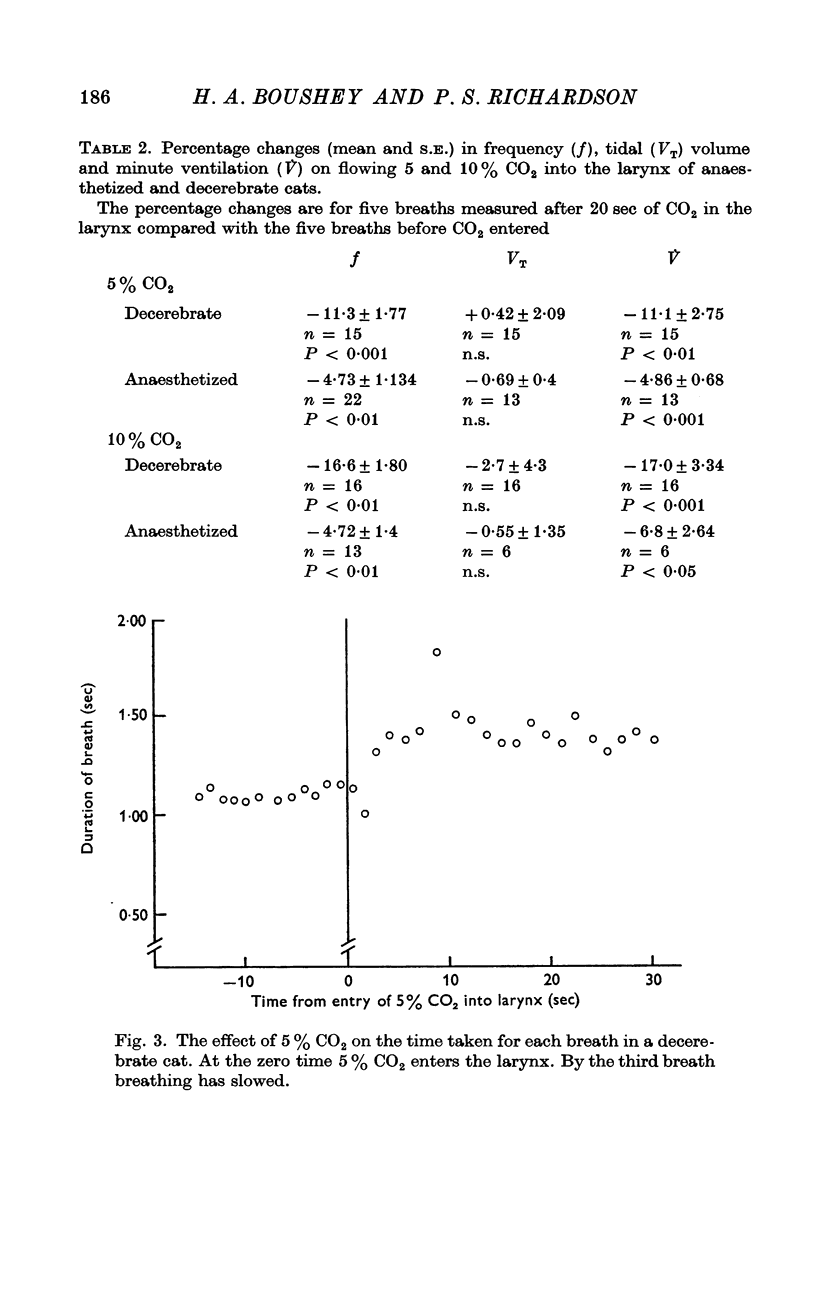
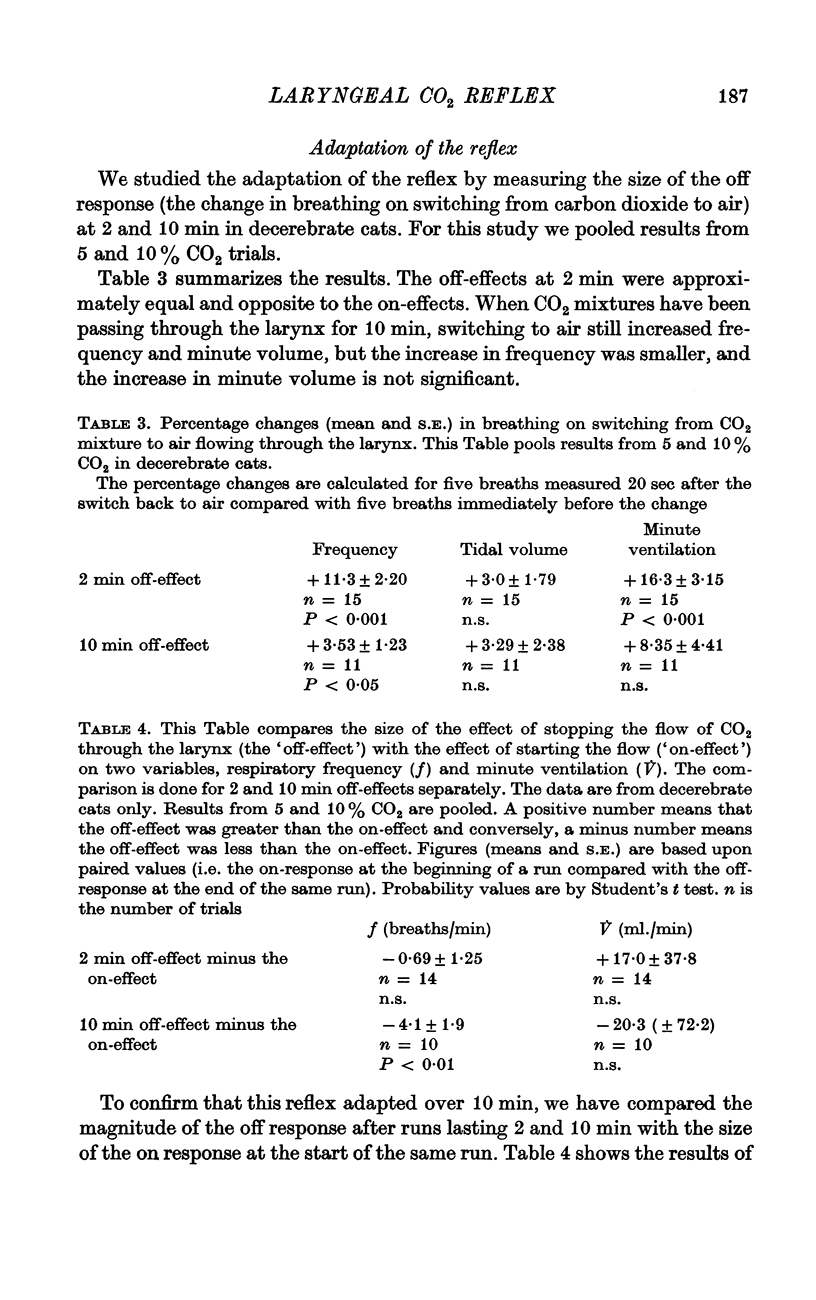
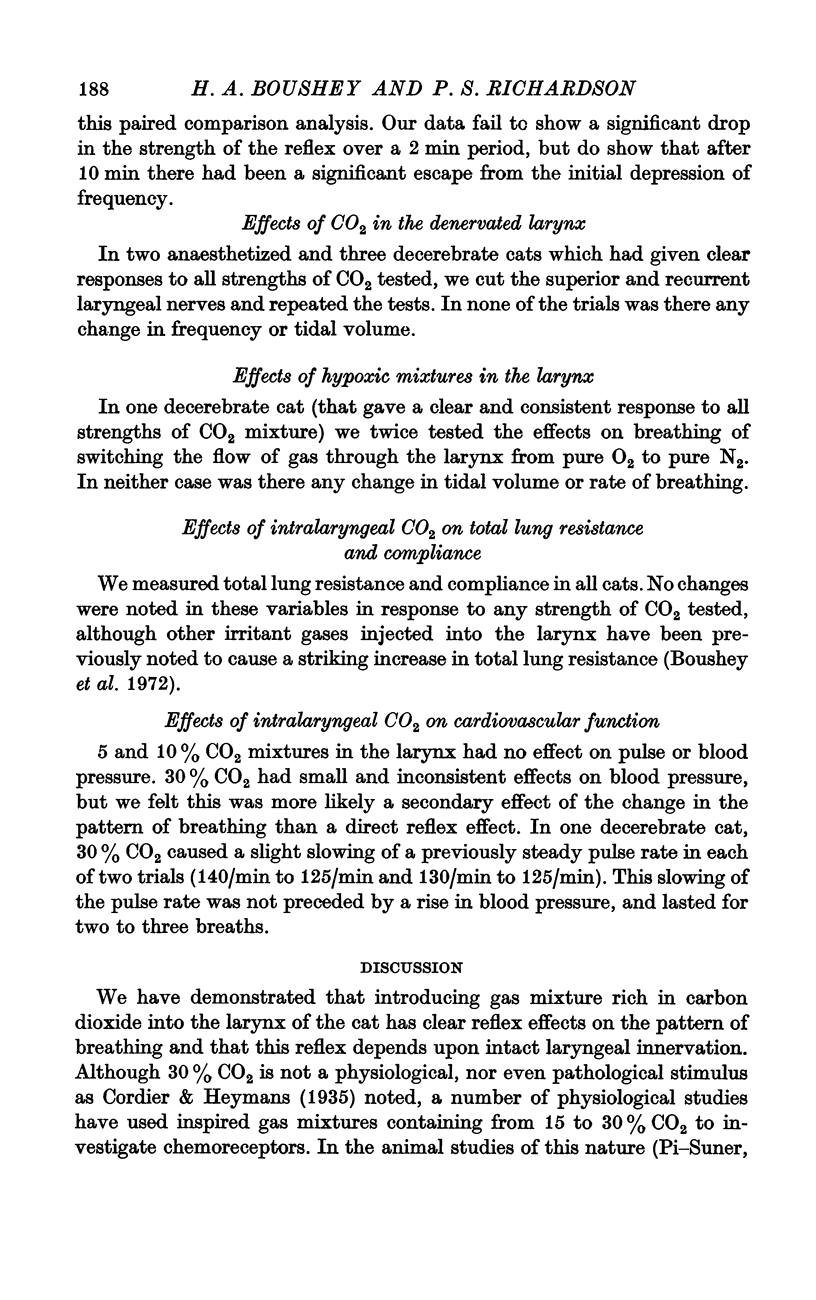
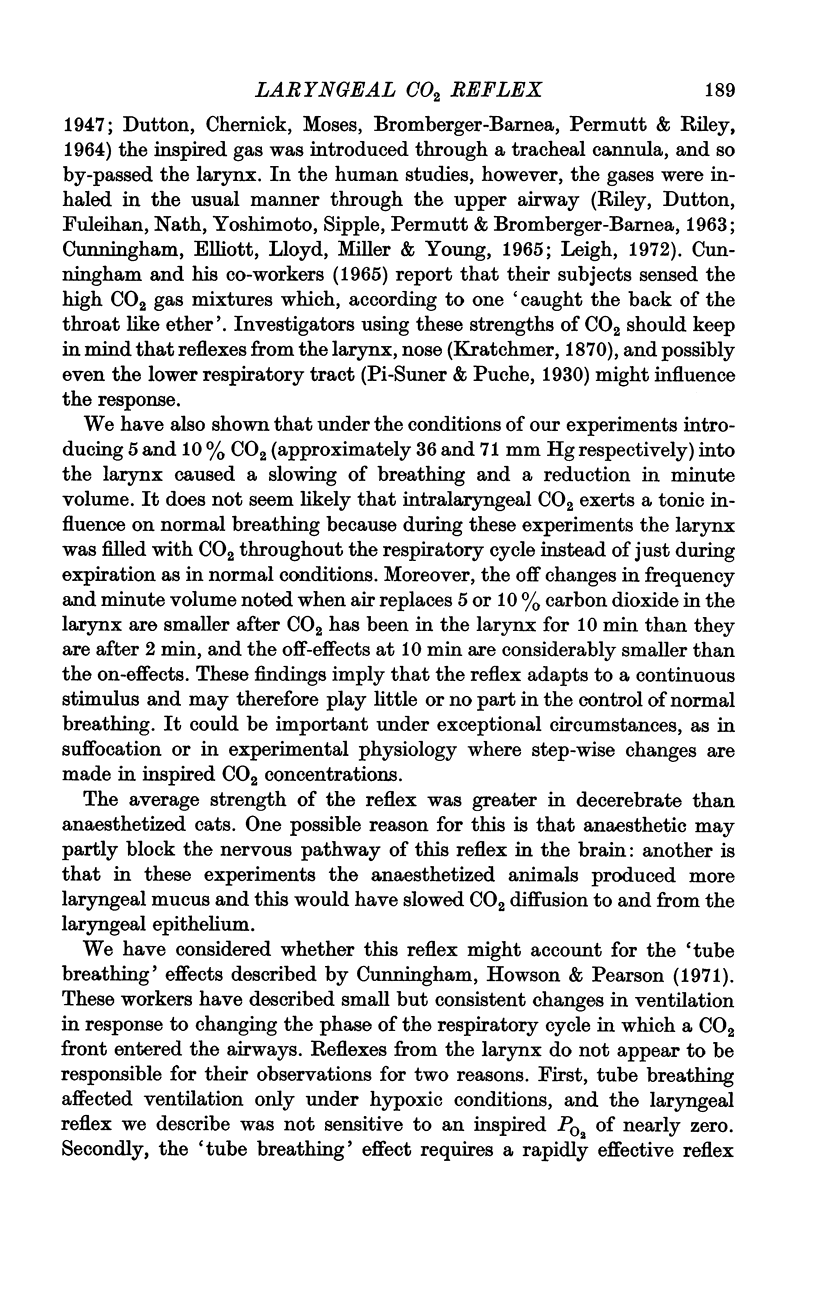
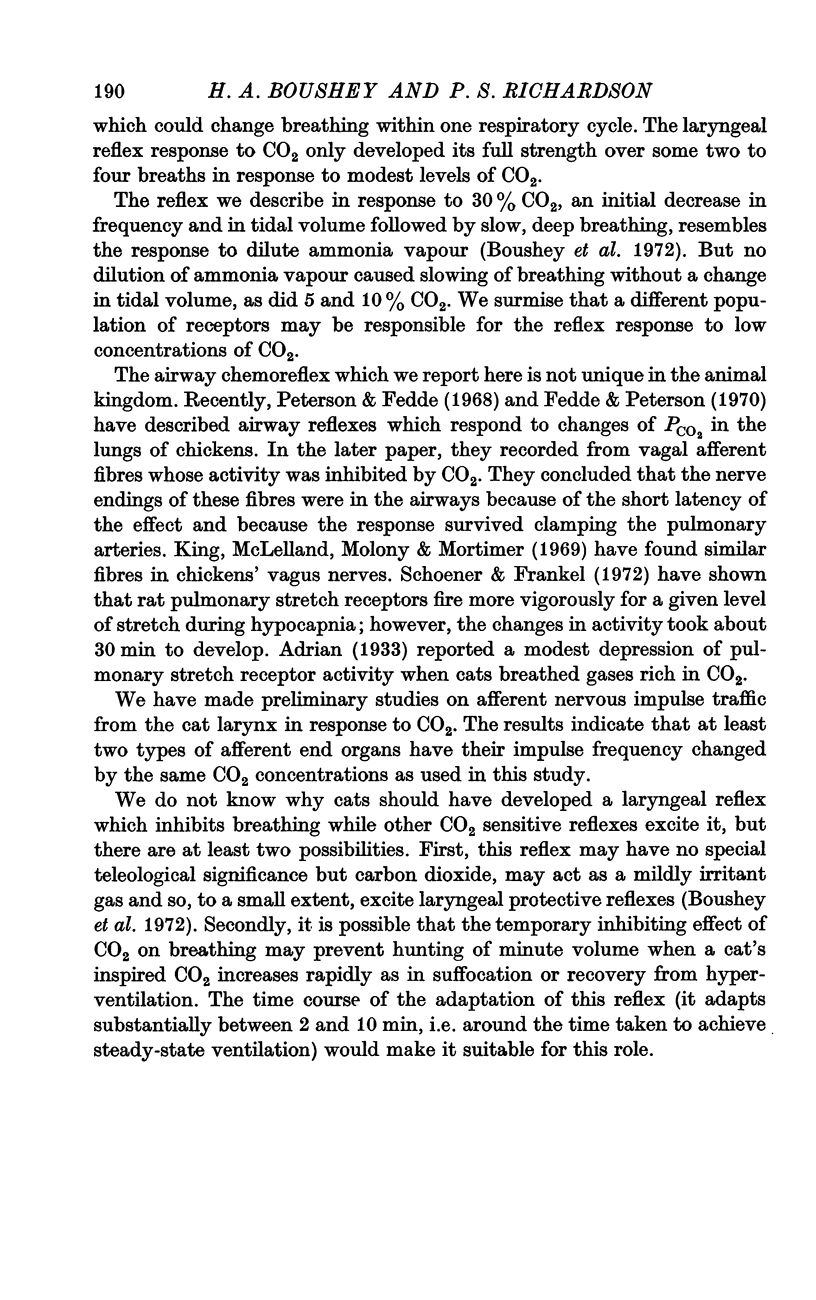
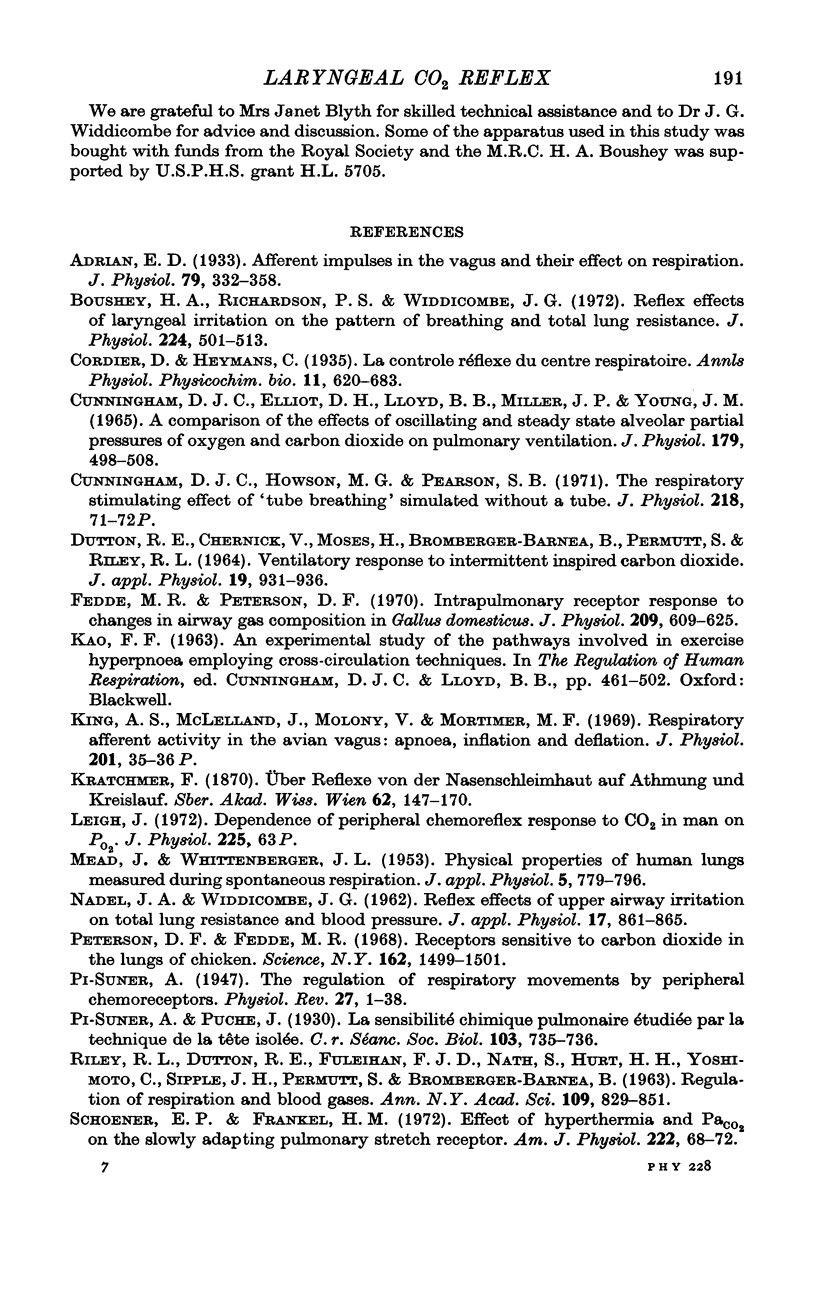
Selected References
These references are in PubMed. This may not be the complete list of references from this article.
- Adrian E. D. Afferent impulses in the vagus and their effect on respiration. J Physiol. 1933 Oct 6;79(3):332–358. doi: 10.1113/jphysiol.1933.sp003053. [DOI] [PMC free article] [PubMed] [Google Scholar]
- Boushey H. A., Richardson P. S., Widdicombe J. G. Reflex effects of laryngeal irritation on the pattern of breathing and total lung resistance. J Physiol. 1972 Jul;224(2):501–513. doi: 10.1113/jphysiol.1972.sp009908. [DOI] [PMC free article] [PubMed] [Google Scholar]
- Cunningham D. J., Elliott D. H., Lloyd B. B., Miller J. P., Young J. M. A comparison of the effects of oscillating and steady alveolar partial pressures of oxygen and carbon dioxide on the pulmonary ventilation. J Physiol. 1965 Aug;179(3):498–508. doi: 10.1113/jphysiol.1965.sp007676. [DOI] [PMC free article] [PubMed] [Google Scholar]
- DUTTON R. E., CHERNICK V., MOSES H., BROMBERGER-BARNEA B., PERMUTT S., RILEY R. L. VENTILATORY RESPONSE TO INTERMITTENT INSPIRED CARBON DIOXIDE. J Appl Physiol. 1964 Sep;19:931–936. doi: 10.1152/jappl.1964.19.5.931. [DOI] [PubMed] [Google Scholar]
- Fedde M. R., Peterson D. F. Intrapulmonary receptor response to changes in airway-gas composition in Gallus domesticus. J Physiol. 1970 Aug;209(3):609–625. doi: 10.1113/jphysiol.1970.sp009182. [DOI] [PMC free article] [PubMed] [Google Scholar]
- NADEL J. A., WIDDICOMBE J. G. Reflex effects of upper airway irritation on total lung resistance and blood pressure. J Appl Physiol. 1962 Nov;17:861–865. doi: 10.1152/jappl.1962.17.6.861. [DOI] [PubMed] [Google Scholar]
- Peterson D. F., Fedde M. R. Receptors sensitive to carbon dioxide in lungs of chicken. Science. 1968 Dec 27;162(3861):1499–1501. doi: 10.1126/science.162.3861.1499. [DOI] [PubMed] [Google Scholar]
- RILEY R. L., DUTTON R. E., Jr, FULEIHAN F. J., NATH S., HURT H. H., Jr, YOSHIMOTO C., SIPPLE J. H., PERMUTT S., BROMBERGER-BARNEA B. Regulation of respiration and blood gases. Ann N Y Acad Sci. 1963 Jun 24;109:829–851. doi: 10.1111/j.1749-6632.1963.tb13509.x. [DOI] [PubMed] [Google Scholar]
- Schoener E. P., Frankel H. M. Effect of hyperthermia and Pa CO2 on the slowly adapting pulmonary stretch receptor. Am J Physiol. 1972 Jan;222(1):68–72. doi: 10.1152/ajplegacy.1972.222.1.68. [DOI] [PubMed] [Google Scholar]


